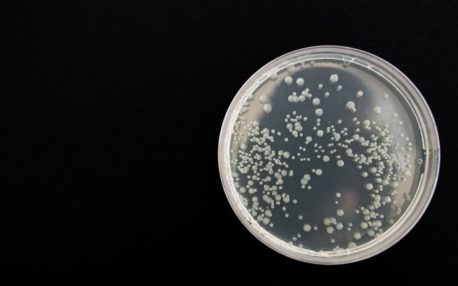Factors in the Pathogenesis of MPN
Impact of Host, Lifestyle and Environmental
Introduction
Myeloproliferative neoplasms (MPNs) are a group of blood disorders characterized by the over-production of myeloid cells from the bone marrow. These diseases occur when hematopoietic stem cells (HSCs) acquire specific mutations, leading to uncontrolled cell growth. The most common somatic driver mutation in MPNs is JAK2V617F, which results in constitutive activation of the JAK/STAT signaling pathway. Chronic inflammation is a key feature of MPNs and is now recognized as not only a symptom but also a contributor to the development and progression of the disease. In addition to genetic factors, host characteristics, lifestyle choices, and environmental exposures play a significant role in the pathogenesis of MPNs

“Like pieces of a puzzle, there are many contributing factors to the pathogenesis of MPN Cancer.”
Host Factors
Clonal Hematopoiesis of Indeterminate Potential (CHIP)
CHIP refers to the expansion of blood cells derived from a single mutated HSC. Aging is a key predictor of CHIP, and certain genes like JAK2, DNMT3A, and TET2 are commonly mutated. CHIP mutations are associated with an inflammatory state.
Infections and Autoimmune Disorders
Chronic immune stimulation through infections or autoimmune diseases may act as triggers for the development of myeloid malignancies. Studies have reported associations between various infections, such as respiratory tract infections, and an increased risk of MPNs.
Aging
MPNs are more prevalent in older individuals, and the JAK2V617F mutation is more commonly detected in the elderly population. Aging-related changes in the bone marrow microenvironment and increased systemic inflammation contribute to MPN development.
Microbiome
The gut microbiome plays a crucial role in regulating hematopoiesis and immune function. Dysbiosis, characterized by an imbalance in the gut microbial composition, has been associated with chronic inflammatory conditions. Dysbiosis of the gut microbiome may trigger MPN disease progression.

“The gut microbiome plays a crucial role in regulating hematopoiesis and immune function”
Lifestyle Factors of MPN
Smoking
Cigarette smoking has been shown to increase the risk of various cancers, including acute myeloid leukemia. Recent studies have also demonstrated a predisposition towards increased risk for MPN in smokers. Smoking promotes systemic chronic inflammation, which is characteristic of MPNs. Smoking cessation is crucial in reducing the risk of disease progression.
Diet
Dietary factors can modulate inflammation and influence the risk of developing chronic diseases. The Mediterranean diet, known for its anti-inflammatory properties, has shown promising results in reducing the incidence of major cardiovascular events. Coffee consumption has also been associated with a reduced risk of PV development.
Obesity and Physical Activity
Obesity is associated with an increased risk of MPNs, particularly essential thrombocythemia (ET). High-intensity physical activity has been inversely correlated with ET development but not with PV. Obesity-related alterations in the bone marrow microenvironment may contribute to the risk of developing MPNs.

“Smoking promotes systemic chronic inflammation, which is characteristic of MPNs. Smoking cessation is crucial in reducing the risk of disease progression.”
Environmental Factors
Ionizing Radiation
Acute or chronic exposure to high levels of radiation has been associated with an increased risk of myeloid malignancies, including MPNs. Studies have also explored the genomic characteristics of MPN patients exposed to ionizing radiation.
Occupational and Chemical Exposure
Occupational exposure to benzene, found in various industries, has been associated with an increased risk of developing MPNs. Additional studies are needed to evaluate the association between exposure to motor vehicle exhaust and MPN risk.

“Occupational exposure to benzene, found in various industries, has been associated with an increased risk of developing MPNs.”
Socioeconomic Factors
Lower socioeconomic status and childhood household density have been associated with an increased risk of MPNs. Socioeconomic factors can influence lifestyle choices, risk behaviors, and occupational exposures, which may further contribute to the development of MPNs.

“Lower socioeconomic status and childhood household density have been associated with an increased risk of MPNs.”
parting thoughts
Understanding the impact of host, lifestyle, and environmental factors on the pathogenesis of MPNs is crucial for developing preventive strategies and improving patient outcomes. Lifestyle modifications, such as smoking cessation and adopting anti-inflammatory diets like the Mediterranean diet, may help reduce inflammation and disease progression in at-risk populations. Moreover, efforts to reduce exposure to ionizing radiation, occupational carcinogens like benzene, and other environmental toxins should be made. Addressing socioeconomic disparities and providing opportunities for education and health promotion can also play a significant role in preventing MPN development.
Further research is needed to elucidate the underlying mechanisms by which these factors influence MPN pathogenesis. Prospective studies with larger sample sizes and longer follow-up periods will help determine the true impact of lifestyle modifications on disease progression and clonal evolution in MPNs. In conclusion, adopting healthy lifestyle choices and minimizing exposure to environmental factors may hold promise in preventing or delaying the onset of MPNs and improving the outcomes for individuals at risk.

“In conclusion, adopting healthy lifestyle choices and minimizing exposure to environmental factors may hold promise in preventing or delaying the onset of MPNs and improving the outcomes for individuals at risk.”